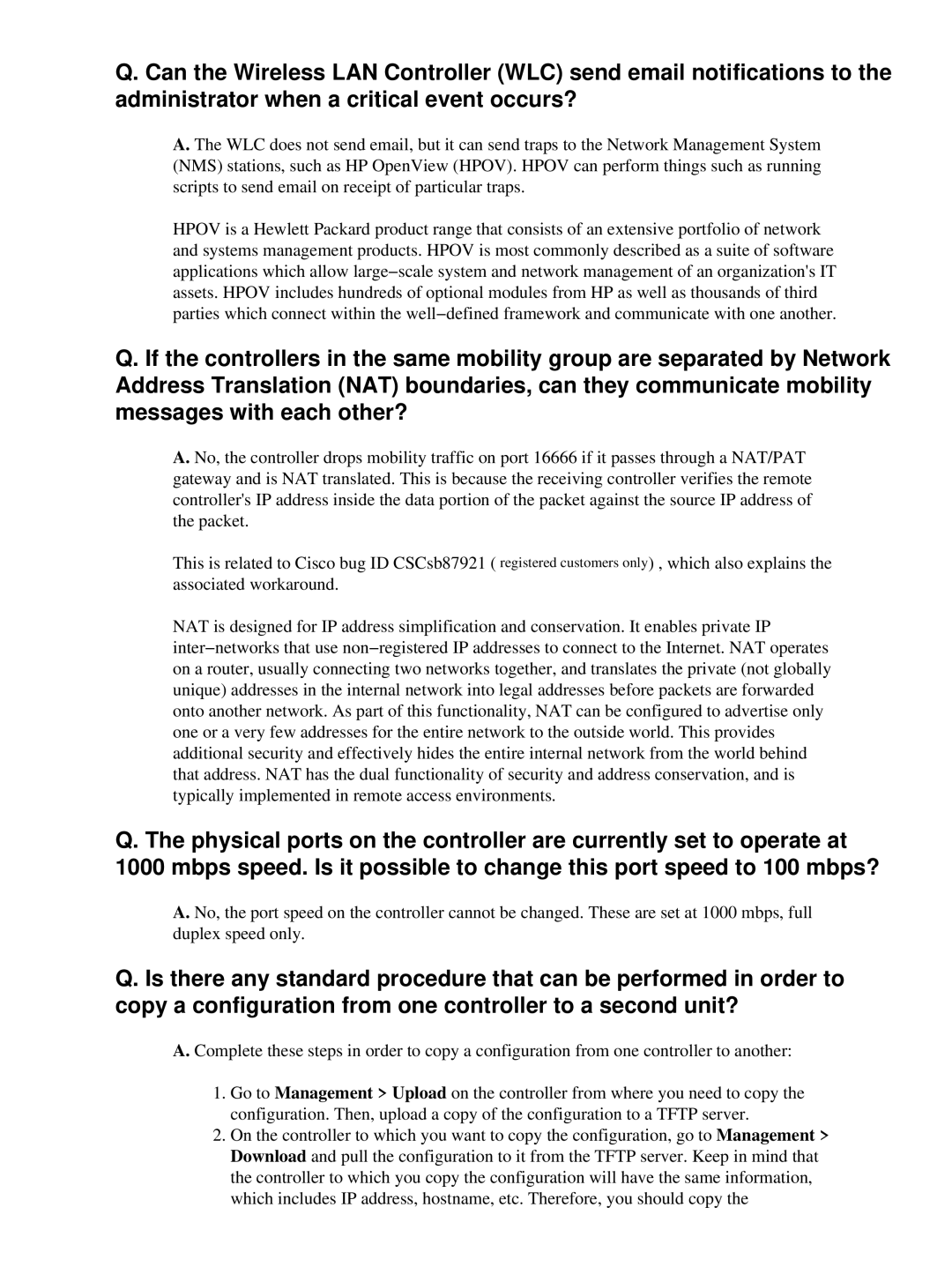Q. Can the Wireless LAN Controller (WLC) send email notifications to the administrator when a critical event occurs?
A. The WLC does not send email, but it can send traps to the Network Management System (NMS) stations, such as HP OpenView (HPOV). HPOV can perform things such as running scripts to send email on receipt of particular traps.
HPOV is a Hewlett Packard product range that consists of an extensive portfolio of network and systems management products. HPOV is most commonly described as a suite of software applications which allow large−scale system and network management of an organization's IT assets. HPOV includes hundreds of optional modules from HP as well as thousands of third parties which connect within the well−defined framework and communicate with one another.
Q. If the controllers in the same mobility group are separated by Network Address Translation (NAT) boundaries, can they communicate mobility messages with each other?
A. No, the controller drops mobility traffic on port 16666 if it passes through a NAT/PAT gateway and is NAT translated. This is because the receiving controller verifies the remote controller's IP address inside the data portion of the packet against the source IP address of the packet.
This is related to Cisco bug ID CSCsb87921 ( registered customers only) , which also explains the associated workaround.
NAT is designed for IP address simplification and conservation. It enables private IP inter−networks that use non−registered IP addresses to connect to the Internet. NAT operates on a router, usually connecting two networks together, and translates the private (not globally unique) addresses in the internal network into legal addresses before packets are forwarded onto another network. As part of this functionality, NAT can be configured to advertise only one or a very few addresses for the entire network to the outside world. This provides additional security and effectively hides the entire internal network from the world behind that address. NAT has the dual functionality of security and address conservation, and is typically implemented in remote access environments.
Q. The physical ports on the controller are currently set to operate at 1000 mbps speed. Is it possible to change this port speed to 100 mbps?
A. No, the port speed on the controller cannot be changed. These are set at 1000 mbps, full duplex speed only.
Q. Is there any standard procedure that can be performed in order to copy a configuration from one controller to a second unit?
A. Complete these steps in order to copy a configuration from one controller to another:
1.Go to Management > Upload on the controller from where you need to copy the configuration. Then, upload a copy of the configuration to a TFTP server.
2.On the controller to which you want to copy the configuration, go to Management > Download and pull the configuration to it from the TFTP server. Keep in mind that the controller to which you copy the configuration will have the same information, which includes IP address, hostname, etc. Therefore, you should copy the
